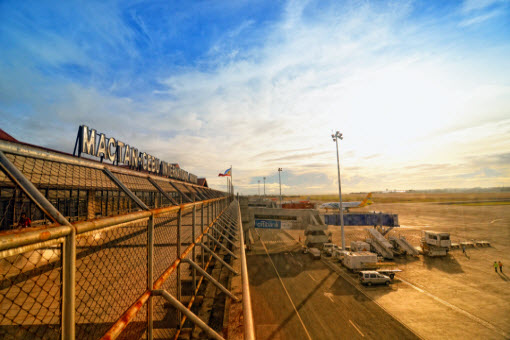 Cargo volume at Mactan-Cebu International Airport (MCIA), the Philippines’s second busiest gateway, has increased 55.5% in the first 10 months of 2015, data from the Mactan-Cebu International Airport Authority (MCIAA) showed.
Cargo volume at Mactan-Cebu International Airport (MCIA), the Philippines’s second busiest gateway, has increased 55.5% in the first 10 months of 2015, data from the Mactan-Cebu International Airport Authority (MCIAA) showed.
From January to October 2015, air volume at MCIA reached 73.479 million kilograms, higher than the 47.147 million kilograms reported in the same period in 2014.
Of the total, domestic cargoes accounted for 77% or 56.629 million kilograms. This is a 65% surge from 34.316 million kilograms in the same period of 2014. Foreign cargoes airlifted contributed 23% of the total or 16.85 million kilograms, 31% up from 12.83 million kilograms logged in the previous year.
Flights likewise improved 10% in number in the first 10 months of 2015 to 52,169 from 47,394 in 2014. About 79% of the total MCIA flights were domestic, which improved 9% to 41,074 from the previous 37,698. Foreign flights, which accounted for 21% of the total, also grew 14.4% to 11,095 from 9,696.
Moreover, passenger traffic went up 13.4% to 6.45 million people from 5.69 million in the first 10 months of 2014.
According to think tank Centre for Aviation (CAPA), the Cebu hub “has emerged as one of the fastest-growing airports in Southeast Asia,” boosted by the re-launch of several domestic routes by Philippine Airlines (PAL), as well as the international expansion by PAL, Cebu Pacific, and foreign carriers.
CAPA said the second largest airport in the Philippines “is poised for more rapid growth in 2016 as PAL continues to pursue expansion at its second hub, with more new domestic routes and the launch of services to Los Angeles, Cebu’s first long haul route.” Cebu Pacific also plans to expand its Cebu base in 2016 with at least two more turboprops.
“Mactan-Cebu is well positioned for long-term growth as the airport’s new private owners have begun construction of a new terminal, which will increase annual capacity to 12.5 million annual passengers,” CAPA said.
It added that the new terminal will enable Cebu to build itself as a hub for transit traffic, even as the airport is set to benefit further from infrastructure constraints in Manila that are prompting Philippine carriers to base additional aircraft in secondary cities.
Furthermore, the think tank said Cebu is a growing market in its own right—showing strength in both the inbound and outbound sectors—“but ultimately Cebu’s growth is enabled by the constraints at Manila and by its own expansion.”
Cebu is also currently operating above its designed capacity of 4.5 million annual passengers, but unlike Manila, it has the space and the commitment to expand, CAPA noted.
MCIA was taken over in late 2014 by GMR-Megawide, which won the 25-year concession to manage and expand the hub.
In June last year, the consortium began a three-year terminal construction project that is designed to boost the airport’s capacity to 12.5 million passengers when it opens in 2018. –Roumina Pablo





